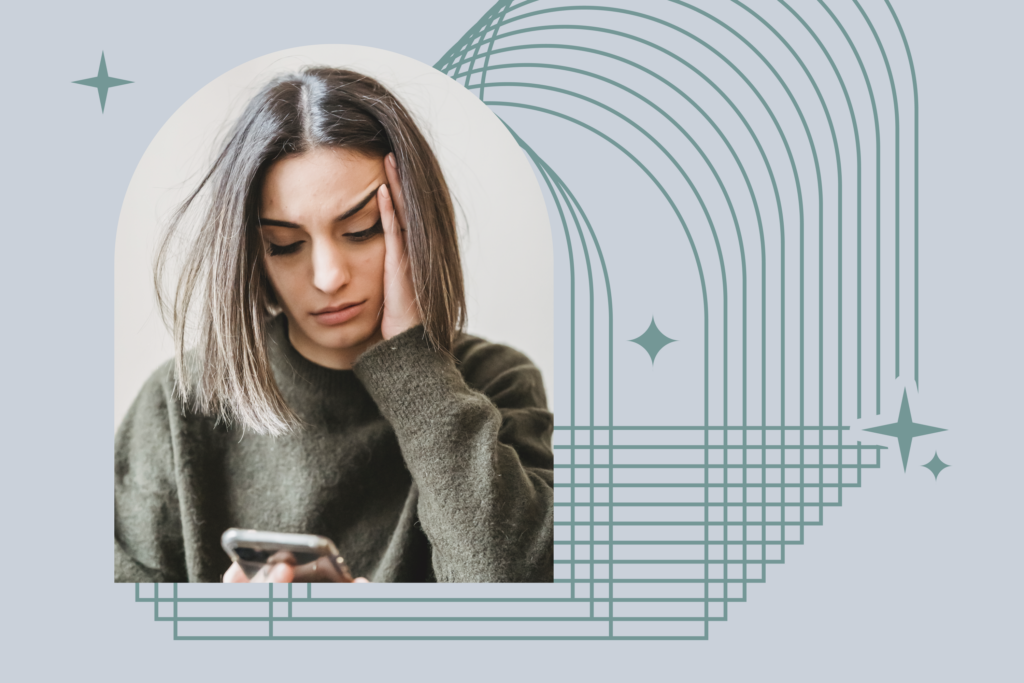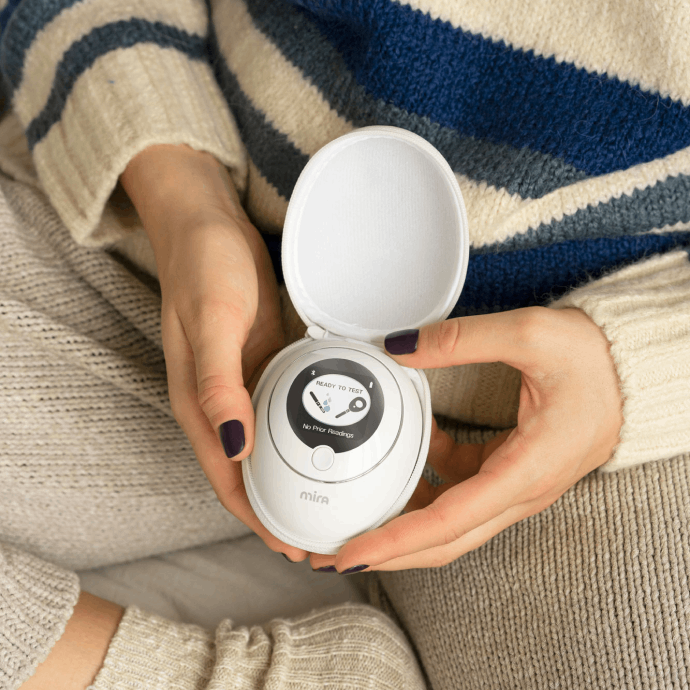11 Low Estrogen Symptoms and Treatments

From driving sexual development to regulating the menstrual cycle, there is no doubt that estrogen is a key player when it comes to your health and fertility. But what happens when estrogen levels dip below where they should be? And when should you speak with a doctor?
In this article, we’ll cover everything you need to know about just that, including what estrogen does, why it decreases, and what you can do about it. Let’s go!
What does estrogen do?
During puberty, estrogen is the driving force behind female sexual development. More specifically, it triggers the development of the body’s sexual organs which eventually leads to the beginning of menstruation. It also causes the body’s physical shape and appearance to change.
In individuals of reproductive age, estrogen controls menstrual cycle regularity, follicular development, and uterine lining growth. It also helps to maintain vaginal wall thickness.
During pregnancy, estrogen is produced by the corpus luteum and eventually the placenta. Its role is to control the production of other pregnancy hormones, support fetal development, and prepare the mother’s breasts for breastfeeding.
Estrogen also supports overall health by helping the body regulate weight, bone and cholesterol metabolism, and glucose metabolism. It also influences multiple organ systems of the body, including the musculoskeletal system, cardiovascular system, and central nervous system.
It’s important to note that there are three different types of estrogen: estradiol, estrone, and (o)estriol. Estradiol is the most common type in women of reproductive age, estriol is the dominant estrogen hormone produced during pregnancy, and estrone is produced after menopause.
Who is at risk of low estrogen?
The following individuals are at the greatest risk of low estrogen:
- Those approaching perimenopause or menopause.
- Individuals with eating disorders such as anorexia or bulimia.
- Those with a family history of hormonal disorders.
Additionally, because estrogen is primarily produced in the ovaries, those who have had one or both of their ovaries removed will subsequently experience lower estrogen levels.
11 symptoms of low estrogen
1. Weight gain
One common symptom of low estrogen is weight gain. This is because estrogen helps to regulate processes that influence weight – such as glucose metabolism. So when estrogen levels are lower than normal, it’s easy to gain weight even if your lifestyle has remained the same.
2. Breast tenderness
According to Harvard Health, estrogen is known to have a “stimulating effect” on the breasts, which is why fluctuating or low estrogen levels may cause the breasts to feel tender. In addition to breast tenderness, low estrogen may also cause the breasts to retain more water than normal and have a “full” feeling.
3. Painful sex
Estrogen plays a key role in maintaining vaginal wall thickness. So when estrogen levels drop, this causes the tissue in the vagina to become thin, which can understandably make sex unpleasant and painful. Alongside the thinning of the vaginal walls, lower estrogen levels may also lead to vaginal dryness which can also contribute to painful sex.
4. Dry skin
When it comes to your skin, estrogen keeps it looking clear and smooth by helping to regulate the body’s oil production. It’s also known to promote healing and reduce inflammation. When estrogen levels decrease, this can cause the skin to feel dry, itchy, and tight.
5. Hot flashes and night sweats
Hot flashes and night sweats are other common symptoms of low estrogen levels. Even though there is limited research into why exactly this is, researchers tend to agree that lower estrogen levels can make your body’s internal thermostat (i.e. the hypothalamus) more sensitive and responsive to changes in body temperature. The result? Hot flashes!
6. Sleeping problems (insomnia)
Research shows that estrogen has a profound influence on the body’s ability to sleep. This is because estrogen not only helps to regulate body temperature, but it also affects certain neurotransmitters, such as serotonin and norepinephrine, which influence mood and sleeping patterns. When estrogen levels are low, it makes it difficult to fall asleep and stay asleep.
7. Vaginal dryness
8. Estrogen helps keep the vagina lubricated, which means that lower estrogen levels may lead to the uncomfortable sensation of vaginal dryness. This can cause a number of painful symptoms including painful sex, irritation around the genital area, and increased risk of developing urinary tract infections (UTIs).
8. Mood swings or depression
Research shows that estrogen is critical for mood regulation, with low estrogen levels associated with an increased risk of mood swings, low mood, and depression. While there are many factors at play, one of the key factors is estrogen’s influence on the production of serotonin and endorphins.
9. Brittle bones
Another common symptom of low estrogen is brittle bones. This is because estrogen stimulates the cells in the body that produce bone. As estrogen levels decrease, these cells do not function properly leading to weakened and more brittle bones.
10. Headaches before or during your period
Low estrogen levels are also known to cause headaches. This is why it’s normal to experience a headache before and/or during your period, as estrogen dips in the days leading up to your period. Among individuals prone to migraines, approximately two-thirds will experience a migraine around the time of their period.
11. Irregular periods
Estrogen is among several hormones that regulate the menstrual cycle. More specifically, the drop in estrogen towards the end of the cycle is what triggers the period to begin. When estrogen is too low, this process doesn’t always work the way that it should which can lead to irregular or missed periods.
Causes of low estrogen
The primary causes of low estrogen include:
- Aging
- Eating disorders
- Surgical removal of or damage to the ovaries
In rare cases, low estrogen may also be caused by certain underlying conditions. This includes:
- Genetic conditions such as Turner Syndrome or Fragile X Syndrome
- Thyroid or pituitary gland disorders
- Autoimmune diseases which cause damage to the ovaries
How to test estrogen levels
The most common type of estrogen to test for is estradiol, as this is the hormone that drives the menstrual cycle in women of reproductive age.
Estradiol blood tests can be conducted at your doctor’s office, or, it’s also possible to order an at-home blood test. Another way to test the urine metabolite of estradiol (known as E3G) is by testing a urine sample. This can easily be done with Mira’s at-home hormone tracker: you will be able not just to get one single result, but to monitor dynamic daily – through the whole cycle, and from cycle to cycle.

How to treat low estrogen
Diet and lifestyle
1. Exercise
Excessive exercise is a risk factor for low estrogen, especially if your exercise routine is contributing to extreme weight loss. If you find that your exercise routine is impacting your mood, daily life, or period, it might be time to reevaluate your routine.
On the other hand, an active, healthy lifestyle is key to good hormone health. If your estrogen levels are low but you’re not very active, consider incorporating more low to moderate-impact activities into your routine to improve overall hormone levels.
2. Stress reduction
The amount of stress we are under can have a strong influence on the way that our hormones work. Stress not only disrupts our sleeping patterns, but it also affects our metabolism, sex drive, and menstrual cycle.
The best way to de-stress is by making sure you have enough time in your schedule to exercise, relax, and socialize with others. By reducing stress, you can increase your chances of your overall hormones being in balance – and that includes estrogen.
3. Healthy diet
Another way to keep your hormones in balance is by maintaining a healthy diet. This means making sure that you are getting plenty of protein, fiber, healthy fats, and whole grains. It also means that you should limit certain “indulgences” such as sugary treats, alcohol, and caffeine. Even though changes to your diet will not have a significant impact on your estrogen levels overnight, they can help to improve overall hormone balance, cycle regularity, and fertility in the long term.
Medications
1. Hormone replacement therapy
Hormone replacement therapy, often referred to as “menopausal hormone therapy” or “HRT”, is an umbrella term for the range of medications that utilize hormones to alleviate symptoms of menopause. Hormone replacement therapies can come in a variety of different forms including pills, creams, skin patches, and gels.
2. Estrogen therapy
Estrogen therapy is a type of hormone replacement therapy that involves only estrogen. This medication is particularly effective for treating hot flashes, night sweats, and heart palpitations, with studies suggesting that it helps to limit the intensity of hot flashes by 65-90%. Another benefit of estrogen is that it helps to prevent osteoporosis.
It’s important to note that estrogen-only therapy increases the risk of uterine cancer, and is therefore typically only prescribed to individuals who no longer have a uterus.
3. EPT
EPT is another type of hormone replacement therapy that incorporates both estrogen and progesterone. This medication is commonly prescribed to women who still have their uterus, as the added progesterone helps to limit the risk of developing uterine cancer.
Take the Quiz!
Tell us your fertility goal and we'll give you a perfect product match
FAQs about low estrogen
When should I see a doctor for low estrogen?
If you are struggling to conceive due to low estrogen levels, it’s often recommended to try to get pregnant for at least a year (if under 35) or at least six months (if over 35) before seeing a doctor.
Alternatively, if you find yourself struggling to cope with the physical symptoms of low estrogen due to menopause, don’t be afraid to bring it up with your doctor at your next checkup and they can help you find some relief.
How can I increase my estrogen naturally?
The best way to boost estrogen naturally is by maintaining a well-balanced lifestyle that incorporates plenty of exercise, healthy foods, and low-stress activities. Certain foods may also help to increase estrogen naturally. This includes soy, nuts, flax seeds, berries, and garlic.
Can low estrogen be a sign of other conditions?
Yes, low estrogen may be an indicator of other underlying conditions such as Turner Syndrome, Fragile X Syndrome, thyroid disorder, or pituitary gland disorder. It may also be an indicator of an eating disorder.
Mira’s Editorial Process
All content produced by Mira meets stringent editorial standards, ensuring excellence and accuracy in language and medical precision. Every piece undergoes thorough fact-checking and review by qualified professionals. Check out our full editorial process to learn more.













